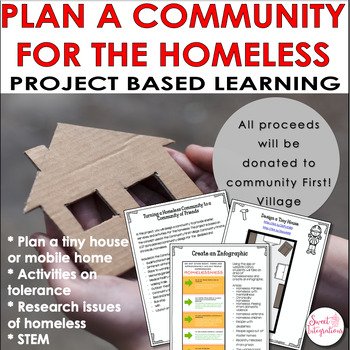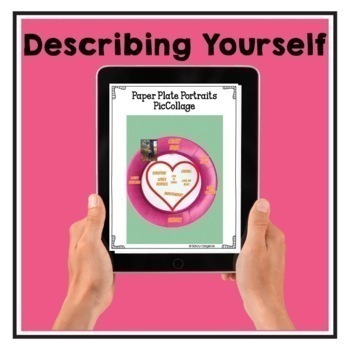Tiny House Sustainable Community -Project Based Learning Social Studies and STEM
- Zip
What educators are saying
Description
We want our students to become productive leaders in society, right? In this project based learning real-life social studies unit, students are going to plan and establish a sustainable community of tiny houses for the homeless. After researching the different causes and effects of homelessness, they will plan a sustainable community with services and activities. This PBL unit focuses on a real-life problem while incorporating 21st century skills.
I am so proud of the project and I think your students will love it. It is based on a community for the homeless that has been established here in Austin. (ALL PROCEEDS FROM THIS UNIT WILL BE DONATED TO COMMUNITY FIRST! VILLAGE IN AUSTIN, TX)
WHY TEACHERS LOVE PBL...
- This PBL unit incorporates 21st Century skills with challenging, engaging, and creative activities.
- There are lots of opportunities for differentiation, cooperative learning, and technology integration.
- This real-world challenge requires students to use inquiry, critical thinking, and creative minds during high-interest cross-curricular activities [math, STEM, social studies, ELA].
- Students love designing their very own SUSTAINABLE COMMUNITY! This is a perfect STEM activity for this unit.
- Easily adapted for enrichment or gifted students in other grade levels.
IN THIS UNIT:
- Read information and statistics about the real-life problem of homeless.
- Visit the website of Community First! Village and learn about the layout, houses/trailers, services
- Design layout of your tiny home community and write a description of your community
- Interview someone who is connected with an organization that provides services to the homeless
- I Wonder – Write questions you have as you progress through the project.
- Research packet (Students or groups select one area of the homeless population to research) Be creative in presenting the information to an audience.
- Decide on vision, mission, and core values; also a name for your community
- Ideas for entertainment center
- Ideas for outdoor entertainment
- Creative arts center
- Garden and farm area
- Add any extra service to your community
- Design a mobile home – Use the online planner to design the layout of the furniture of the mobile home.
- Design a tiny house – Use the online planner to design the layout of the furniture in the tiny house.
- Templates for mobile home and tiny house
- Use Canva, PicCollage, or other apps to design an infographic
- Likes and Differences activity to understand
- Paper Plate Portraits with PicCollage
- Opinion Writing – Why do you think people become homeless?
- Narrative Writing – How did he get here?
- Powerpoint – Powerful words to discuss in small groups
- A Bit More… Website resources and Newsela reading passage.
- Evite to attend the opening of your community
- My Reflections
TEACHERS LIKE YOU HAVE SAID...
⭐️⭐️⭐️⭐️⭐️ "My students and I have loved this project. I used it as a capstone project in Environmental Science and worked in several field trips and guest speakers along with students having to create a sustainable green model home and a community map that considered garden areas, public transport, green space, wastewater treatment, etc. I also found a podcast too that worked well with this project."
⭐️⭐️⭐️⭐️⭐️ “We are currently using the materials as a foundation for making a stance for the homeless population of our county in Florida. We have learned that 44% of our population is classified homeless. Our county at this time does not have any facilities for our homeless population. It is extremely high because of the great tourist industry that is in our area. The club is trying to make their mark in the community. Thank you for the introduction to our project.”
⭐️⭐️⭐️⭐️⭐️ “This was such an engaging project for my middle school STEAM class. Students worked independently on this research project, created a trifold board of their research and plans, and ended up building a small model of their tiny home as well. Students have a new appreciation for what they have, and have learned how their skills and knowledge could help those around them.”
*******************************************************************
***Teachers, if you want to go digital with this project with collaborative research and organizing the project, take a look at my Project Based Learning Digital Interactive Notebook and Project Based Learning Digital Teacher Planner.
YOU MAY ALSO LIKE…
→ Project Based Learning Growing Bundle
→ Project Based Learning Units
→ Project Based Learning Digital Interactive Notebook
*******************************************************************
Copyright © Sweet Integrations. All rights reserved by the author.
Permission to copy for one classroom only. You can purchase additional licenses if more than one classroom uses the product.
© 2015 Google and the Google Apps are registered trademarks of Google Inc.
*******************************************************************
Follow Me for sales, product launches, and FREE resources.
*******************************************************************
Drop by my blog, Sweet Integrations for more ideas for your classroom!





